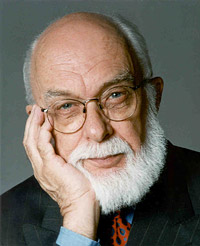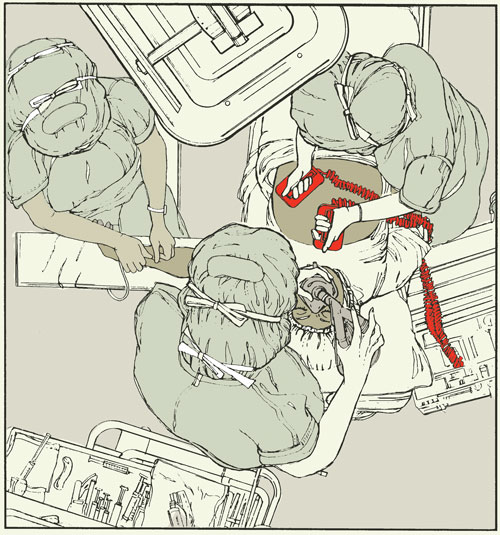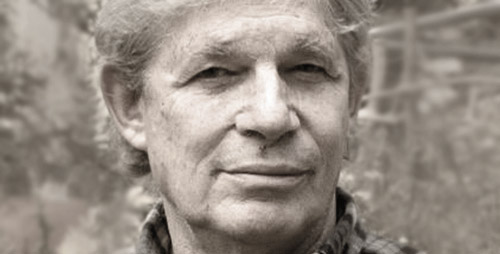
Bill C-51 “Astroturf” story makes
front page of the National Post
As a followup to our May 28th eSkeptic, in which Skeptic magazine’s Daniel Loxton uncovered the shadowy business interest behind the faux consumer watchdog site stopc51.com, we present a link to the front page National Post article that was influenced by Loxton’s investigative journalism.
20% off James Randi’s books and videos!
(for one week only, June 18–24, 2008)

In honor of James Randi’s “The Amazing Meeting” (TAM6) in Las Vegas we are offering 20% off all of James Randi’s books and videos at Shop Skeptic from June 18–24, 2008.
- An Evening with James Randi (DVD)
- The Mask of Nostradamus (paperback)
- Pseudoscience & the Paranormal (DVD)
- James Randi’s Solved Mysteries (DVD)
- Flim Flam! Psychics, ESP, Unicorns
and other Delusions (paperback) - The Faith Healers (paperback)
The discount will be applied at the office when your order is received.
In this week’s eSkeptic, Mark Crislip dissects some medical research on near death experiences. Crislip is an Infectious Disease doctor in Portland, Oregon. He is responsible for the Quackcast podcast and is an occasional contributor to the Science Based Medicine Blog. He also produces the Puscast podcast and the Persiflagers Annotated Compendium of Infectious Disease Facts, Opinion and Dogma.

illustration by Pat Linse, co-publisher and art director of Skeptic magazine
Near Death Experiences
& the Medical Literature
by Mark Crislip
Miracle Max: See, there’s a big difference between mostly dead and all dead. Now, mostly dead: he’s slightly alive. All dead, well, with all dead, there’s usually only one thing that you can do.
Inigo: What’s that?
Miracle Max: Go through his clothes and look for loose change.—The Princess Bride
In a recent issue of Skeptic (Vol. 13, No. 4), in the debate between Michael Shermer and Deepak Chopra about life after death, both authors refer to an article in the prestigious British medical journal Lancet about Near Death Experiences (NDEs), in which of 344 cardiac patients resuscitated from clinical death, 12 percent reported near-death experiences, where they had an out-of-body experience and saw a light at the end of a tunnel.: Lommel, P. V., R. V. Wees, V. Meyers, I. Elfferich. 2001. “Near-Death Experience in Survivors of Cardiac Arrest: A Prospective Study in the Netherlands.” Lancet. Vol 358 No. 9298: 2039.
I read the article from the perspective of a practicing physician who spends all his time in an acute care hospital and has been involved with many cardiac arrests over the years. The NDE question in this study hinges on whether the were dead or nearly dead. In the article the authors “defined clinical death as a period of unconsciousness caused by insufficient blood supply to the brain because of inadequate blood circulation, breathing, or both. If, in this situation, CPR is not started within 5–10 min, irreparable damage is done to the brain and the patient will die.”
Every patient in this study had CPR, most within 10 minutes of their cardiac arrest, so they all had blood delivered to their brain. That is the point of CPR. The authors write: “If purely physiological factors resulting from cerebral anoxia caused NDE, most of our patients should have had this experience.” Yet, good CPR does not lead to cerebral anoxia. Most patients in this study did not have an NDE because they had CPR, so they had blood and oxygen delivered to the brain; thus, they could not have an anoxia mediated NDE.
So the real question is whether patients who had brain anoxia had an NDE, and there is no way to determine that in this paper. CPR by its self is not a good surrogate for cerebral anoxia. Having a cardiac arrest and being promptly coded does not mean there is insufficient blood and oxygen being supplied to the brain. CPR has variable efficacy, depending on the both the patient and the experience of the provider. Most of us who have had to be involved with a code know, for example, the horrible sensation of all the ribs cracking when you start CPR on a frail old lady and knowing that the CPR is probably not going to be effective.
As a result of variable CPR, the time it takes the brain to become anoxic is variable. And it is surprising at how little oxygen people can tolerate with no discernible dysfunction in their cognition, although you might not want them flying your 747. People come into the hospital all the time with the amount of oxygen in their blood decreased by 30,40, and even 50 percent, and yet can still walk and talk.
The point is that during a resuscitated cardiac arrest the ability of the brain to get oxygen can be quite variable, and if the CPR is done effectively the brain gets enough oxygen that it is not damaged. By the definitions presented in the Lancet paper, nobody experienced clinical death. No doctor would ever declare a patient in the middle of a code 99 dead, much less brain dead. Having your heart stop for 2 to 10 minutes and being promptly resuscitated doesn’t make you “clinically dead”. It only means your heart isn’t beating and you may not be consciousness. Declaring someone dead if their heart isn’t beating is not a good definition.
What about brain death? Here there are many criteria: the patient has to have no clinical evidence of brain function by physical examination, including no response to pain and a variety of nerve reflexes that do not work: cranial nerve, pupillary response (fixed pupils), oculocephalic reflex (steady gaze), corneal reflex (lack of reflexive blinking to stimulation), and no spontaneous respirations. They have to be off all drugs that mimic brain death for several days and they cannot have metabolic conditions that mimic death. It is important to distinguish between brain death and states that mimic brain death and most of the patients received either a benzo (valium like drugs) and/or a narcotic. A flat line EEG, two at least 24 hours apart, is another criteria. In other words, being declared brain dead is a time consuming and detailed procedure, as it should be. This will become important in a moment.
Michael Shermer at least quotes the paper that the patients were “clinically dead” using the authors’ own flawed definitions. But as we have seen, their definition of being clinically dead is an artifice used for the paper but of no clinical or physiological relevance. Deepak Chopra declares “when there was no measurable activity in the brain, when they were in fact brain dead,” and yet nowhere in the Lancet article do the authors mention whether, besides being unconscious, neurologic function was assessed and the clinical diagnosis of brain dead was determined.
In the discussion of the paper the authors state “Also, in cardiac arrest the EEG usually becomes flat in most cases within about 10 seconds from onset of syncope [loss of consciousness].” They reference an Annals of Internal Medicine article (“Electrocerebral accompaniments of Syncope Associated with Malignant Ventricular Arrhythmia’s.” 1988 Jun;108(6):791–6), as well as one in the journal Anesthesiology ( “Electroencephalographic Changes During Brief Cardiac Arrest in Humans.” 1990;73:821–25), where they put EEG monitors on patients who were having defibrillators implanted. One of the side effects of having a defibrillator implanted is that your heart is often stopped for a period of time, or you have a heart rhythm induced called ventricular tachycardia, that is usually fatal but can, to a small degree, perfuse the brain.
That is not true. I pulled the articles and read them. What they showed was slowing, attenuation, and other changes, but only a minority of patients had a flat line, and it took longer than 10 seconds. The curious thing was that even a little blood flow in some patients was enough to keep EEG’s normal To quote the annals paper, “Electroencephalographic changes were variable. Background slowing was usually followed by relative loss of electrocerebral activity.” It is a big difference between this and saying everyone flat lines in 10 seconds.
How long does it take to flat line? If there is zero perfusion, the experts at my hospital tell me it is more like 20 seconds. That’s with no perfusion. And the EEG experts tell me that the sensitivity of an EEG for function is more like a one megapixel camera than a 5 megapixel. The brain probably doesn’t start to die until several minutes elapses. In my state an EEG is considered so insensitive it does not have to be included as part of the criteria for determining if someone is brain dead; although we get it anyway, a flat line EEG is only part of the mix.
So there is a flat line EEG that occurs acutely when the brain is not getting oxygen, and there is the flat line that occurs when the brain is dead, and an EEG cannot distinguish between them. Only the person at the bedside can do that. So when the authors of the Lancet article write, “in cardiac arrest the EEG usually becomes flat in most cases within about 10 seconds from onset of syncope,” this is not supported by the literature they reference.
Mr. Chopra’s analysis that NDE patients are flat line and brain dead suffers from the same problems as the authors of the Lancet article. It simply isn’t supported by the particulars of the literature he quotes. Both Chopra and Shermer quote the article correctly as to number of NDE, although it depends on how an NDE is defined, hence saying 12 percent (Shermer) or 18 percent (Chopra) of patients had an NDE is correct, depending on how many criteria you include in a definition of an NDE. As well, the Lancet paper authors suspect a selection bias in their study and offer a “real” rate of 10 percent for NDE, or only 5 percent of patients if based on the number of resuscitations, as more CPRs lead to more NDEs. They also admit in the discussion that their broad definition of NDEs makes their percentage higher because it is more inclusive. It is all in how you define NDE.
One final curious caveat appears in the Lancet paper: “The investigators report that, at the 2-year follow-up, four of 37 patients contacted to act as controls (i.e., people who had not initially reported an NDE) reported that they had had one. Although these patients represent fewer than 1% of the total sample, they represent over 10% of the 37 patients interviewed with a view to acting as controls. If this subsample is at all representative, it implies that around 30 patients from the sample of 282 who initially denied an NDE would, if they had survived for another 2 years, be claiming that they had had one. ” Some of the NDEs were, it seems, implanted memories.
The discussion also greatly exaggerates the conclusions that can be drawn from their data. “We did not show that psychological, neurophysiological, or physiological factors caused these experiences after cardiac arrest.” Of course not, since the study could not have any reliable data as to causation of NDE’s.
This is followed by “NDE pushes at the limits of medical ideas about the range of human consciousness and the mind-brain relation.” I do not see this conclusion from the data in this article. Upon close reading I think the only thing this paper is qualified to determine is a description of who get NDEs and what patients report. As to etiology of NDEs, much less mind-brain relations, it can say nothing. The authors’ reach exceeds their grasp.
I am not saying NDEs don’t happen, and I am certainly not going to disagree with the idea that nearly dying is transformative. It is probably why real NDEs have greater effects on people than lab induced NDEs. The knowledge that you are truly mortal is life altering. Cancer survivors can have the same epiphany without the cardiac arrest.
The devil is in the details. As is so often the case, when you go back and read the original paper and its references, what the paper says and what the paper is purported to say often turn out to be two very different things.

Dr. Stuart Kauffman will be speaking on Thursday, June 26, 2008 at 7:00 pm.
upcoming lecture…
Reinventing the Sacred:
a New View of Science, Reason & Religion
with Dr. Stuart Kauffman
SPECIAL DATE: Thursday, June 26, 2008 at 7:00 pm
Baxter Lecture Hall, Caltech
In this controversial lecture based on his new book, the world-renowned complexity theorist Dr. Stuart Kauffman argues that people who do not believe in God have largely lost their sense of the sacred and the deep human legitimacy of our inherited spirituality, and that those who do believe in a Creator God, no science will ever disprove that belief. Kauffman believes that the science of complexity provides a way to move beyond both reductionist science and dogmatic theology to something new…
READ MORE about this lecture >
Important ticket information
Tickets are first come first served at the door. Sorry, no advance ticket sales. Seating is limited. $8 Skeptics Society members & Caltech/JPL Community; $10 General Public.











